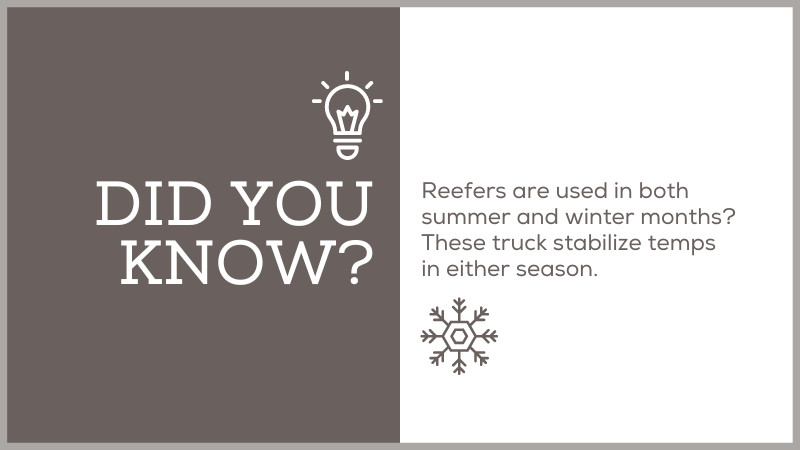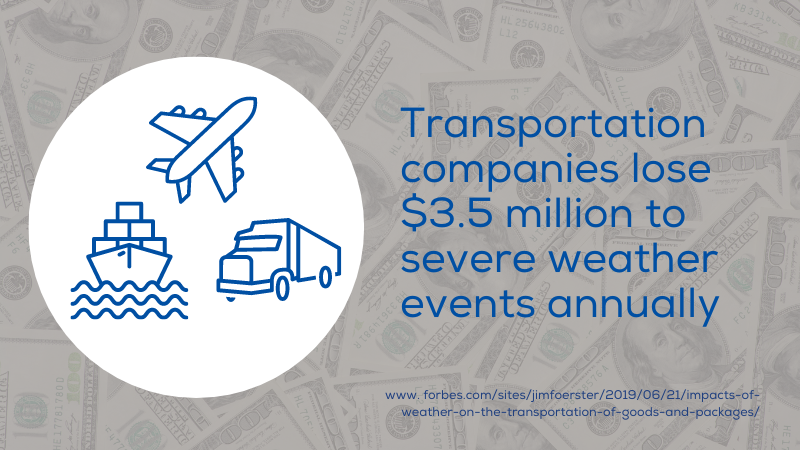-
Keys to Success for Vendor Compliance and Inbound Shipping
10/24/2025 — Leah Palnik

For many retailers, obtaining vendor compliance and maintaining smooth inbound shipping operations may seem like a tall order. However, with the right planning and follow through, it is achievable. By following these keys to success, you’ll be on your way to reducing your freight costs, avoiding chargeback issues, and creating efficient operations.
Developing an effective routing guide
The very foundation of achieving vendor compliance is developing an effective routing guide. Routing guides provide shipping instructions to your vendors that help you gain control of your inbound shipments. They often include modes and carriers for specific lanes, as well as rate and service requirements.In order to create routings that are best for your business, you’ll need to consider several factors. Price, transit time, and reliability are all important when selecting a carrier and determining how to have your product shipped. For different services and weight breaks, you want to designate a carrier that provides you with the best rate and can deliver your product in the time you need.
Conducting an in-depth analysis of your inbound shipments can be time-consuming but necessary when determining your routing instructions. This is where working with the right freight broker can make a huge difference. The broker you work with should provide inbound management services that help determine the routings that will be best for your business and will create the routing guide for you – saving you valuable time.
Maintaining good relationships with your vendors
For smooth inbound shipping, you want to have a good rapport with your vendors. Like any other relationship, communication is key. For example, when you send your routing guide out to your vendors, it’s a good idea to include a request for confirmation. However, you won’t always receive one. If that’s the case, following up and opening the lines of communication will be your best bet to ensure vendor compliance.If your vendors aren’t using your routing instructions after receiving your routing guide, you’ll need to follow up with a call or email. When you have a good relationship with your vendor, you’ll have the right point-of-contact and will be able to resolve the issue quickly. If not, you could have a harder time achieving vendor compliance.
Maintaining a relationship with your vendors can be difficult and time-consuming. This is another area where working with the right freight broker can make a difference. When selecting a freight broker, ask about experience in your industry. Quality freight brokers familiar with your industry will already have an established relationship with many of your vendors, which will help with compliance efforts.
Perfecting your order forecasting
Managing your inventory can be challenging. But the advantages of forecasting and planning your orders ahead of time are too great to ignore. When you don’t plan ahead and then need your product within a shorter time-frame, you will have to rely on costly expedited services. Spending the time up front to make sure your orders are placed with ample time will be better than spending the extra money in the long-run.Also, with more lead time, you’ll be in a better position to handle any issues that arise. For example, if your shipment gets lost or damaged in transit and you need your product immediately, you’ll be out of luck. In that event, you’ll need to file a freight claim which doesn’t always guarantee compensation and is often a lengthy process.
If you’re not able to place your orders ahead of time, it’s a good idea to consider freight insurance. Unlike relying on carrier liability coverage, you won’t have to worry about if the carrier is found liable or not and often times you’ll get paid out much faster – making it easier to resume operations as normal.
Conducting regular reviews for improvements
Once you do have a routing guide in place and have vendor compliance, you can’t just set it and forget it. It’s best to review your routing instructions periodically so that you’re always getting the best rates and service possible.ou can choose to set aside a specific time each year to do a review. But if you make any changes throughout the year with your orders or any other factor that affects your shipments, you’ll want to take that time to evaluate and update if necessary.It’s also important to stay on top of carrier rate increases, accessorial changes, and NMFC updates. These kinds of changes can have a significant effect on your freight costs and you'll want to make sure that you fully understand how these changes will affect your specific shipments. For example, carriers announce general rate increases every year and will present an average increase. If you simply use that average to judge how your costs will be affected, your budget will most likely be off. The increases vary greatly across the board depending on a number of characteristics, so it's important to evaluate them based on your specific shipments.
Partnering with the right freight broker
The keys to vendor compliance and inbound shipping management are easy to master when you work with the right freight partner. PartnerShip can help conduct a complete inbound shipping analysis, create a routing guide, and send routings on your behalf for vendor compliance. Contact us today to learn more about managing your inbound shipments!
Click to read more... -
2025 Year-End Planning for Your FedEx and UPS Shipments: Surcharges, Deadlines, and Rate Increases
10/16/2025 — Bryan Pruett

The end of the year is often hectic for many businesses, with 2025 proving no different. As you navigate the holiday season and prepare for the year ahead, you’ll want to heed our warnings for your FedEx and UPS parcel shipments.
Ship early
We can’t stress this enough! The closer we get to Christmas, the higher the demand on carrier networks. While major disruptions aren’t expected, the seasonal surge in shipments and subsequent strain on carrier networks can still lead to delays. Being proactive and shipping early gives you extra time and flexibility if things slow down. This is especially important for time-sensitive packages that need to be delivered by Christmas. Regardless of who you ship with, the holiday season can be unpredictable; plan ahead and build in some buffer time to help ensure your packages reach their destinations on schedule.
Review holiday shipping deadlines
For retailers, this is especially important. As customers place their orders for holiday gifts, they’ll want to know that they’ll receive them before the big day. FedEx and UPS have released their shipping deadlines, so make sure to review them and plan accordingly. That way, you’ll be able to manage expectations appropriately and keep your customers happy.
Peak season surcharges
Both FedEx and UPS are applying demand surcharges for the 2025 seasonal shipping surge. These fees add extra costs to packages, especially hitting residential deliveries and oversized packages the hardest during peak weeks.
The first wave of demand surcharges runs from late September through the end of November. They range from $0.40 to $2.20 for residential deliveries and select ground and expedited services.
All of the demand surcharges then increase the week of Thanksgiving through the week of Christmas. The surcharges for standard-sized shipments range from $0.60 to $3.55 during this time. On top of that, if your package is considered oversized or requires additional handling, you can expect to pay up to an additional $545.
For the final wave, the surcharges mirror those accessed at the beginning of peak season and last until January 17th for UPS and 18th for FedEx.
One important thing to note is that throughout the entire peak season, many of these additional fees adjust weekly or even increase based on your account’s shipping volume. To avoid surprises, review the published information and factor these seasonal adjustments into your budgets.
Prepare for the 2026 rate increases
Don’t forget that after you make it through the holiday season, your FedEx and UPS rates will be going up. Both carriers have announced another average 5.9% rate hike for 2026.
It’s tempting to take that announced average and budget for your costs to go up by that much, but unfortunately, it’s not that simple. How much your rates will go up in the new year will largely depend on which services you use, your package characteristics, and where you’re shipping to/from. That 5.9% general rate increase (GRI) also doesn’t account for surcharges, which can drive up your costs even more. As always, plan ahead, ship early, and stay educated.
Ensure you’re getting the best rates
With parcel rates and surcharges continuing to rise, managing your shipping costs is more important than ever. PartnerShip offers industry-leading discounts that help businesses stay competitive and protect their bottom line. Our team makes it easy to uncover savings opportunities and simplify your shipping process. Request a free rate comparison today to see just how much you can save with PartnerShip.

Click to read more... -
How To Best Protect Your Freight From Freezing
10/13/2025 — Jen Deming

Winter is coming, and that means large parts of the nation will be impacted by cold, freezing temperatures, and adverse weather conditions. Certain types of freight, like beverages, electronics, and pharmaceuticals, are especially at-risk for damage during the winter months. The good news is that there are ways to protect your freight from freezing, which can help avoid both damages and cost challenges during the winter months. But you must be vigilant and follow three essential strategies.
Strategy 1 – Ensure your prep and packaging can handle cold temperatures
Protecting your freight starts with you, the shipper, and proper packaging and preparation. To make sure that your freight kicks off its journey safely, make sure to use the following tactics to avoid issues:- Know your product: Different types of products have varying temperature minimums, so first and foremost, you should determine what temperature ranges are safest for your freight.
- Group like products together: When palletizing or crating your loads, make sure similar product types (and temperature ranges) are grouped together for maximum safety.
- Use insulated packaging: When boxing up your product, make sure items are packed with insulating materials, like foam core, cotton or paper fiber, or insulated box liners.
- Wrap packed pallets: Insulated pallet covers, or specialty cargo blankets can help trap heat inside, making sure your products stay a warm and consistent temperature.
- Track temperature variations: Many shippers opt to use smart thermometers that can help track shipment temperature and detect any shifts that may impact the product.
- Load quickly and efficiently: Your loading team doesn’t have the luxury of time during the winter. Load carrier trucks quickly to minimize exposure to low temperatures and other weather risks like rain and snow.
To be completely honest, the equipment you choose will make or break your freight. Most carriers, especially large national carriers like TForce Freight, offer temp-controlled services and have specialized trucks in their fleet that can manage freeze-protection. 'Reefer' (refrigerated) trucks aren't just used to haul frozen products during the summer. They can also be used to maintain a constant temperature for at-risk freight during the colder months.

When arranging your temp-sensitive freight, it’s important to contact your preferred carrier and learn about what options they offer. Communicate your shipment’s needs, starting with product type and what the required temperature range must be. Carriers can help secure a reefer truck, offer heated truck options, or even may provide alternative heating solutions, like portable or built-in trailer heating units.
After communicating with the carrier and deciding which temperature-control options are right for you, it’s important to note temperature requirements on your bill-of-lading. As with most special requests, this not only gives the carrier direction on your needs, but it can also be used as a point of reference for liability should something go wrong during transit.
Keep in mind, that temperature-control services are considered accessorials, and will incur charges and fees that may vary by carrier. Building those fees into your shipping costs is best done early on in the transportation process.
Strategy 3 – Stay on top of delays and weather conditions
Not every part of the United States will be impacted by inclement winter weather – but most of it will be. Snow, rain, ice, and even wind can create major issues for truckers during the winter season. It’s super important to research the path that your shipment will be taking. Don’t let your load fall prey to the common “out of sight, out of mind” misconceptions some shippers succumb to.

When shipping LTL, your load won’t travel from point A to point B in one straight shot. The further your load travels, the more varied its path will be. If your shipment enters any of the high-risk zones like the Midwest, New England, or Central U.S., it’s extra crucial you stay on top of weather updates for your shipping lane. When the weather is bad enough, it’s in your best interest to delay shipping until it clears, if you can swing it. Road closures and rerouting may be hard to predict, so it’s always smart to build extra time into your transit.
Shipping over the weekend is always tricky, even in the best-case weather scenarios. But in the colder months, you will likely encounter extra challenges. Because weekends are considered “dead freight” time, your loads will sit and be exposed. Your best bet is to ship early in the week and avoid weekends all together, but if you have to, make sure you communicate with the carrier about keeping the temperature-control running while idle.
Because freight transit can be so unpredictable during cold weather, always keep in mind that you should be keeping alternate shipping options open. If you have a larger freight shipment, a dedicated truck may be a viable alternative. While pricey, keeping room in the budget for emergency scenarios like weather delays is a smart plan of action.
Shipping freight safely in winter is possible
Winter weather freight shipping can be tricky, but it’s not out of the question. You will need to strategize even more than you’re used to, and take every precaution necessary to avoid slip-ups. Keep in mind that now is not the time to take any unnecessary risks just in an effort to save a buck. PartnerShip can help you keep on top of cold weather shipping issues, including communicating with carriers and staying on budget. If you’re going to be shipping this winter, make sure to contact our freight experts so your freight is delivered safely.

Click to read more...
-
Keys to Success for Vendor Compliance and Inbound Shipping
10/24/2025 — Leah Palnik
Click to read more... -
2025 Year-End Planning for Your FedEx and UPS Shipments: Surcharges, Deadlines, and Rate Increases
10/16/2025 — Bryan Pruett
Click to read more...
